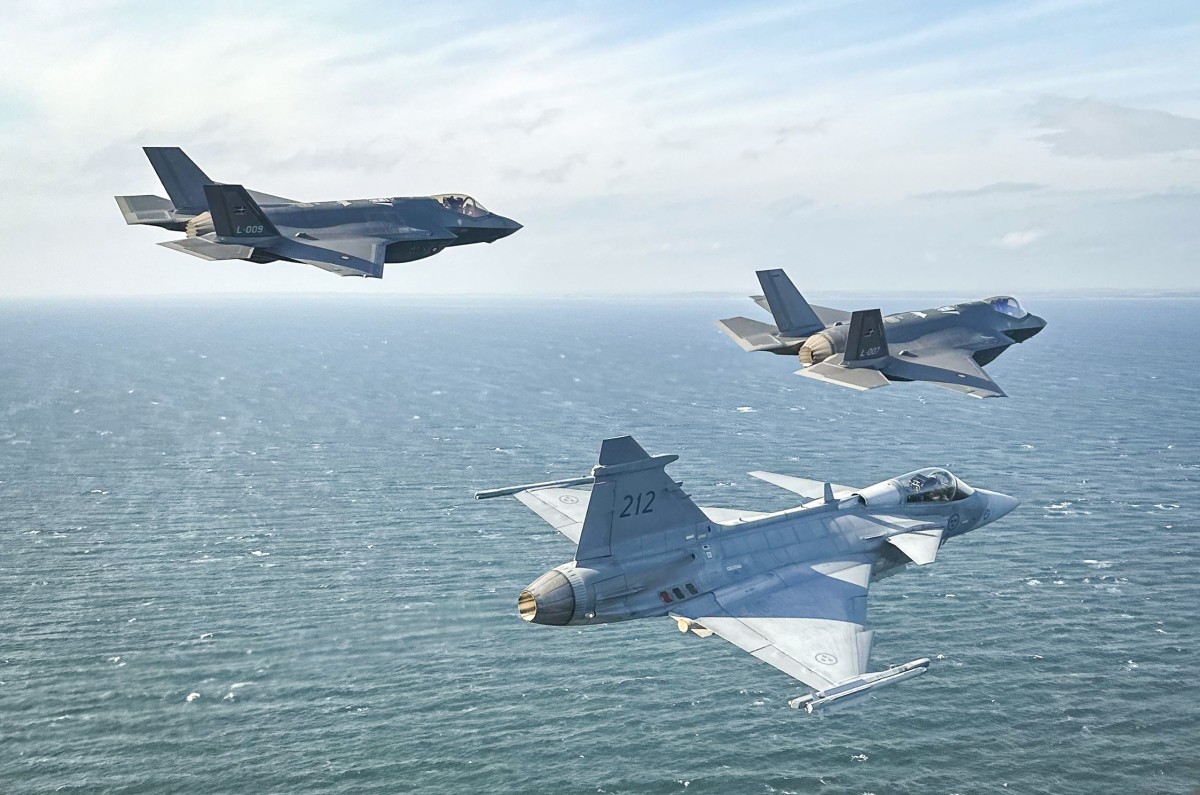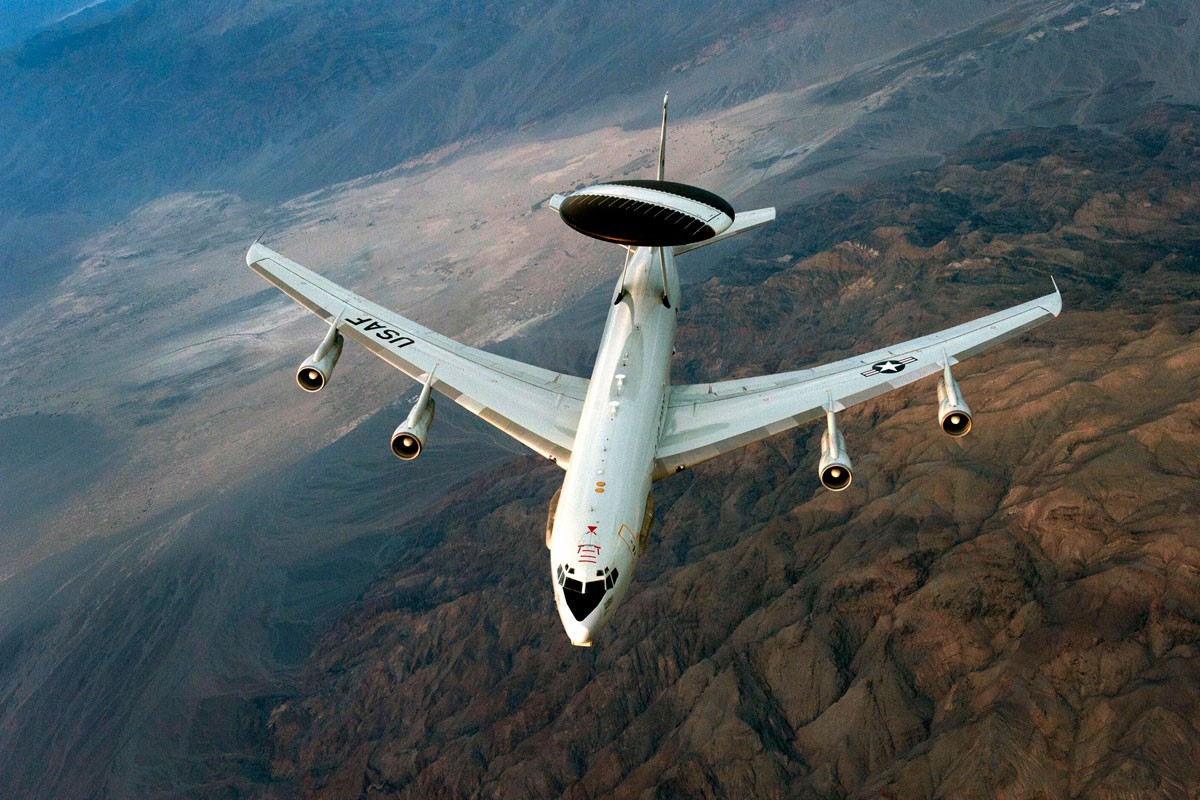While Russia might hold some military edge over American and European militaries, a terrain where Moscow does face significant challenges is in the air.
Two weeks ago, a joint exercise between Swedish JAS-39 Gripen fighters and Danish F-35 stealth jets demonstrated how sophisticated Western fighter aircraft technology could inflict severe damage on the Russian Aerospace Forces (RuAF).
The Generation 4.5 Gripen-E particularly, still acts as a force multiplier to NATO’s air fleet and poses a formidable threat to Russian fighters.
Russia recognizes these conventional military threats posed by Europe and the US and, therefore, has repeatedly indicated it does not wish to enter a direct war with the two. It is possibly because of this reason that President Vladimir Putin hints at nuclear weapons use over what he calls an “existential threat” to the Russian state.
Gripens & F-35 Join Hands
On March 15, the Danish defense ministry reported the “first” such exercises between Copenhagen’s Stockholm’s F-35s and Gripens, featuring “dogfights” and “cooperative exercises” at Ronneby near Karlskrona in southern Sweden.
“The cooperation is based on a mutual understanding of and interest in the two nations across the Øresund making use of experience and competences in order to thereby strengthen the joint fighting power,” the statement added.

“The fact that we, as neighbors and close allies, utilize each other’s capacities not only provides great training value pilots and personnel, but it is also visible proof of the ambition to be able to operate effectively together,” it quoted the head of the Air Force, Major General Jan Dam.
Gripen Tactics
According to retired IAF Mirage-2000 pilot Air Marshal Anil Chopra, Russia appreciates the capability and advantage of the Gripen, especially its ‘E’ variant (Gripen-E) brings to the table.
“Indeed, the Gripen has little stealth, but it can be effectively used as a decoy to lure away and confuse Russian fighters and air defense systems, while the F-35s and the Eurofighter Typhoons engage in beyond-visual-range combat (BVR).
The latest Gripen-E variant’s Gallium Nitride (GaN) Active Electronically Scanned Array (AESA) radar, infrared search and track (IRST), and externally mounted electronic warfare/electronic countermeasures (EW/ECM) and jamming pods make it more than just a point defense aircraft,” Chopra said.
The Gripen-E also has launchers that can fire the AIM-9 Sidewinder and the AIM-120 Advanced Medium-Range Air-to-Air Missile (AMRAAM). The F-35, with its stealth and sophisticated electronic intelligence (ELINT), can exploit its ability to look first and shoot first. “The Gripens, meanwhile, can take off from air bases between valleys and non-descript roads, part of their agile combat employment (ACE) practice, where Russia has several blindspots,” Chopra added.
While how the JAS-39 Gripen stands before Russian fighters remains a matter of theoretical analysis, it must be remembered that it was designed in the late 1980s to take on Soviet fighters themselves by replacing the aging Draken and Viggen jets. The Swedes wanted a new jet that could hit Mach 2, take off from short runways, and that would be smaller than the Viggen while carrying a higher payload.
The single-engine lightweight delta-wing and canard-configured multirole jet, which can also undertake ground attack reconnaissance, can still punch far above its weight.
Just days after officially joining NATO, the JAS-39 Gripen marked Sweden’s integration into the Alliance with the first intercept of a Russian Antonov An-26 and a Tupolev Tu-134 with German Luftwaffe Eurofighters and Belgian F-16AMs over the Baltic Sea.
It had shown its prowess before Allied aircraft like the F-16, Eurofighter Typhoons, and the F-15 during the 2006 Red Flag Exercise in Alaska, scoring several air-to-air kills with only one loss.
But now, Sweden’s entry into NATO has given an official imprimatur for European air forces flying F-35s and Typhoons to develop tactics with the Gripen-E to take on Russian Su-35s, Su-30SM2, and Su-57s. The Danish statement itself hinted at the most likely tactic.
It noted that the Gripen and the F-35 belong to “different generations,” but their differing capabilities can be combined. The F-35’s “special ability to process (and share) massive amounts of data, create an unprecedented situational picture with allies” can be combined with the Gripen’s ability to be mass-produced, which “increases the amount of capable combat aircraft and thus makes more weapons available.”
Simply said, this is a ‘radar and missile truck teaming’ being suggested, where the Gripen releases missiles at targets shared by the F-35 over data links while remaining hidden behind its stealth, jamming and locating Russian airborne and ground-based radar emissions.
The F-35 itself will not have to compromise its stealth by opening its underbelly weapons bays and increasing its side-aspect Radar Cross Section (RCS).
Russia’s Weaknesses
Combine this with Russia’s lag in Airborne Warning and Control Systems (AWACS) like the A-50U. After the loss of three planes to Ukraine, Russia has been left with just seven to eight A-50Us. These older-generation airborne radar platforms are without modern electronics, microprocessors, and data processing to counter stealth and land-attack cruise missiles (LACM).
The new A-100 is still to enter serial production and is believed to be in the testing stage. Only one airframe has been built so far.
US and NATO, meanwhile, have several functional E-3 Sentry AWACS and RC-135 Rivet ELINT planes, which would fly closer to the Russian borders and not from within the military bloc’s territory in the event the two sides are officially at war.

Sweden can enhance this capability with its Gulfstream S102 Korpen GIV-SP Signal Intelligence (SIGINT) and an SAAB 340 Airborne Early Warning and Control (AEW&C) aircraft. The latter can track planes and missiles at 300 to 400 km from an altitude of 20,000 feet.
Europe & US Catching Up With Russian Industrial Prowess
Europe and the US have now set in motion plans to revive their defense industries. While it may take them around a decade to increase production, swell their military hardware, and reorient themselves towards conventional war, after being out of touch with the habit since the 1990s, they will nevertheless meet the need for mass.
By then, Lockheed Martin’s AIM-240 Joint Advanced Tactical Missile (JATM), being developed to match the staggering ranges of Chinese and Russian BVR missiles like the PL-15 and the R-37M, will have come online.
The AIM-240 is designed to be fired from the F-35, F-22, F/A-18E/F Super Hornet, and the F-15EX.
- The author can be reached at satamp@gmail.com
- Follow EurAsian Times on Google News




